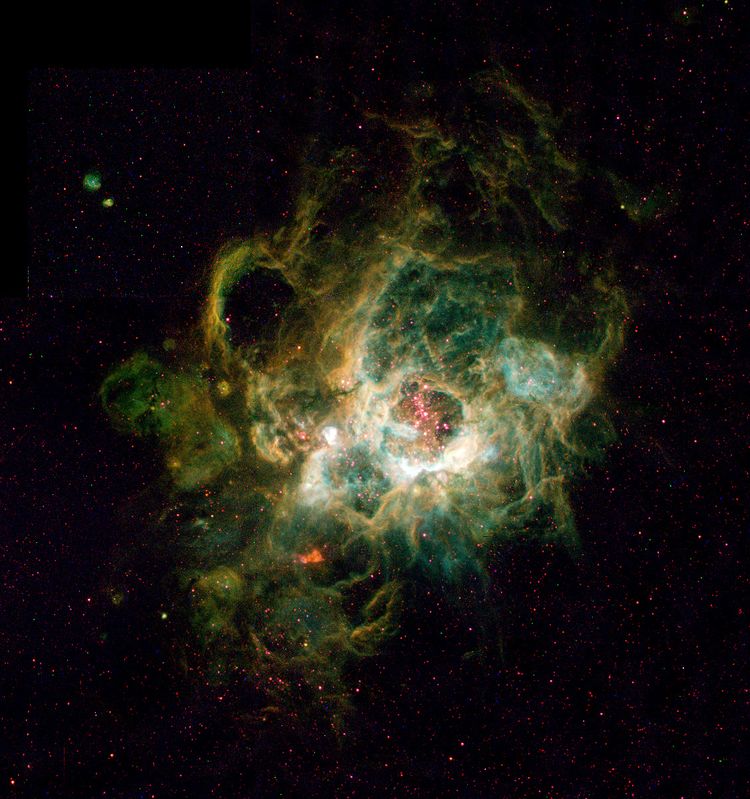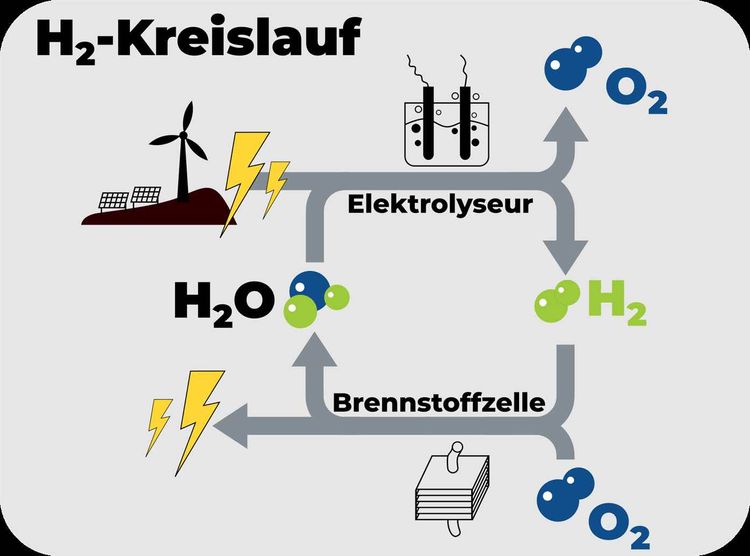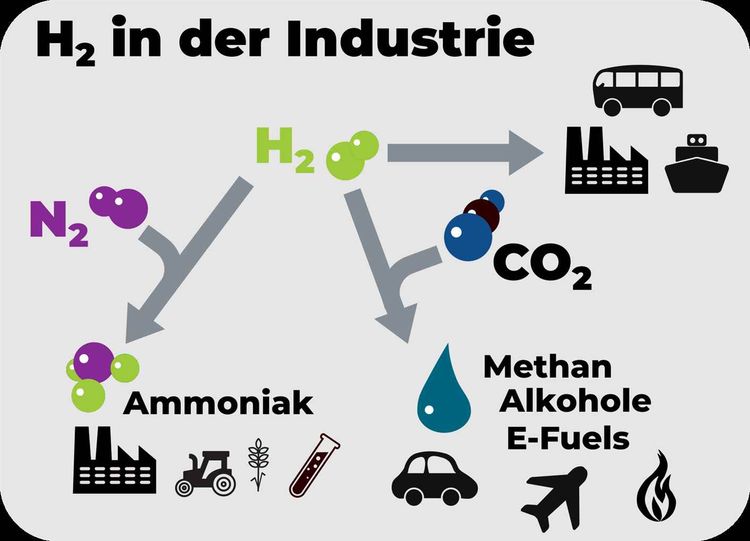In the guest blog, the physicists Dominik Kreil and Andrea Navarro-Quezada write about hydrogen.
A few days ago, the Austrian Government presented their hydrogen strategy to the media. We are lagging behind in comparison to other countries like Germany or South Korea. However, we still have a chance to take a leading role in hydrogen technology. But, why is this gas so important? Here we want to explain what hydrogen is and where its potential lies. To achieve this, we have to start from the very beginning.
At the beginning, there was hydrogen
Shortly after the big bang (and with “shortly” we mean several hundred thousand years) the first atoms formed. Later on, they started to combine to molecules. The most abundant atom is hydrogen (H), which consists of a proton surrounded by a lonely electron. From this, the stars formed. Our sun also consists mainly of hydrogen. Under suitable conditions, two of these atoms can form a hydrogen molecule (H2). Still today, this is the ubiquitous substance in our universe. On earth, it can be found in connection with oxygen, which we all know as water (H2O).

Hydrogen to store energy
With a so-called PEM-electrolyser (proton exchange membrane) one can split water using electrical energy. In principle, this device consist of two electrodes (electrically charged metal plates) placed in distilled or highly purified water (H2O). Normal water should not be used, due to the production of harmful gases during the process! On the positively charged electrode, an electron is stolen from the water and pure oxygen (O2) is formed. Some protons (H+) remain which travel through the membrane to the negatively charged electrode. There they gain an electron and are now able to form hydrogen gas (H2).
In a fuel cell, this process can be reversed and the used energy can be regained. The only exhaust from this process is water vapour! Thus, hydrogen can be used to store energy like a battery, which is different to coal and gas that are treated as energy sources. This is a big advantage when talking about renewable energy coming from the sun and wind. The energy produced in summer with photovoltaic cells can be stored in hydrogen and regained in dark winter times. With this, long- and short-term energy peaks can be smoothed out.

All the colours of the rainbow
Indeed, this subtitle is a little bit of an overstatement, but in the context of hydrogen, a big colour palette can be found. Hydrogen as a gas has no colour nor an odour. Also its flame burns transparent and is invisble.The colours we speak of refer to the process in which hydrogen is produced. Grey hydrogen is produced from fossil energy carriers like natural gas. During reformation of methane, a lot of CO2 is released into the atmosphere. If this carbon dioxide is captured and stored, then the obtained hydrogen will be labeled blue.
Besides the electrolysis, the so-called pyrolysis is a quite modern process to produce H2. In pyrolysis, methane is converted into solid carbon and hydrogen gas at very high temperatures. If only renewable sources are used, then the hydrogen is said to be green. One very seldom colour in Austria is purple hydrogen, where the energy to produce hydrogen stems from atomic power plants. Up to now, almost all of the employed hydrogen in Austria is grey.
However, the government aims at covering 80% of the required energy with climate neutral hydrogen until the year 2030.

So small and yet so versatile
Hydrogen is the simples existing molecule, but has a lot of possible applications. It has been used in industry for almost a century. For example in the Haber-Bosch process which binds Nitrogen (N2) from atmosphere to produce ammoniac, which is needed in chemical industry as well as in the production of fertilizers. If carbon dioxide is captured in industrial processes, it can be converted into methane when combined with hydrogen. This gas can then be used again where we used natural gas before. Also fuels, alcohols and polymers can be produced in a similar way. One of the most prominent used cases can be found in the steel industry, where coal and coke is needed to free iron ore from oxygen. This can be done by hydrogen in the future. This is a huge opportunity for the industry to become carbon neutral, as up to know they are responsible for more than 10% of the CO2 emissions in Austria.
It is clear that the climate crisis is right on our doorstep. Therefore, we have to work together to become climate neutral as fast as possible. Hydrogen will not be the magic bullet, but will for sure play a key role in this process. (Andrea Navarro-Quezada, Domink Kreil, 13.6.2022)
More blog posts
- Edith Stoney: The first female medical physicist
- X-rays: Insight into the inner structure of matter
- Yearning for an on-site physics conference